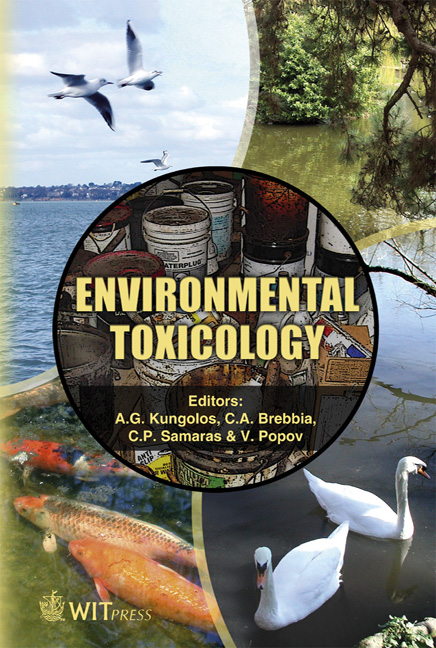Total Mercury And Methylmercury In Fish From A Tropical Estuary
Price
Free (open access)
Transaction
Volume
10
Pages
10
Published
2006
Size
355 kb
Paper DOI
10.2495/ETOX060181
Copyright
WIT Press
Author(s)
A. P. Baêta, H. A. Kehrig, O. Malm & I. Moreira
Abstract
Mercury content, as methylmercury, in aquatic biota varies greatly among species from the same location. Many parameters may affect its accumulation and concentration in fish tissues. The study assessed total mercury (T-Hg) and methylmercury (MeHg) in the muscle, liver and gonad of Micropogonias furnieri - carnivorous fish, Bagre spp. - omnivorous fish and Mugil liza - iliophagous fish from a polluted eutrophic estuary in the Brazilian Southeast coast, Guanabara Bay. Fish were collected during the years 1990, 1999 and 2003. T-Hg was determined by CV-AAS with sodium borohydride as a reducing agent. MeHg was identified and quantified in the toluene layer by GC-ECD. In all cases, the liver appears to be the preferential organ for mercury accumulation. T-Hg in muscle was higher and more variable in carnivorous than in omnivorous and iliophagous fishes. Carnivorous and omnivorous fishes presented a similar percentage of MeHg (99% and 97%) in the muscle. Iliophagous fish, which is at the lower level of this food chain, presented the lowest % MeHg in the muscle and liver, 52% and 9% respectively. However, the percentage of MeHg to T-Hg was around 25% in the liver of carnivorous and omnivorous fishes. In all cases, the gonad presented the lowest T-Hg, and the ratio of MeHg to T-Hg was around 1. In the year 1999, the samples of carnivorous and iliophagous fishes presented the highest T-Hg in the muscle. In this year, the fish specimens of both species showed sexual maturity and the highest total length. The sex of the specimens did not show any influence in the accumulation of mercury by the fish. The total length of the fish specimens presented a significant relationship with T-Hg in the muscle. The different feeding habits of the studied species are important for the accumulation of mercury and methylmercury by the organisms. Mercury, as methylmercury, is biomagnified through this food chain. Keywords: tropical fish species, different feeding habits, biological parameters, methylmercury, total mercury, Brazilian estuary.
Keywords
tropical fish species, different feeding habits, biological parameters, methylmercury, total mercury, Brazilian estuary.





